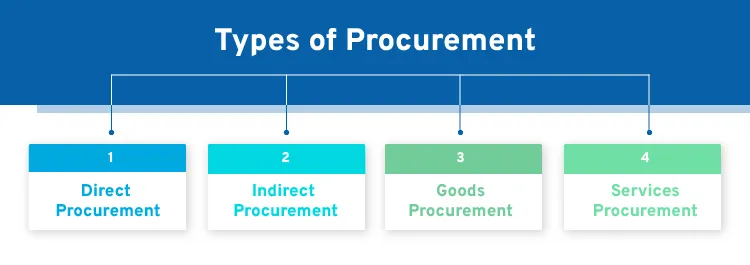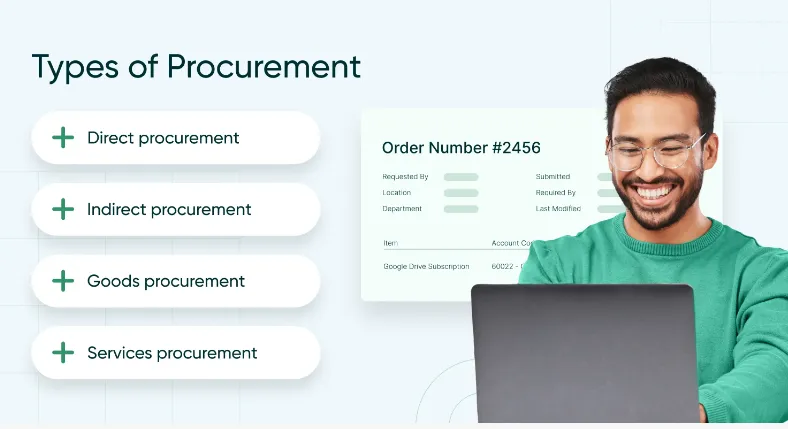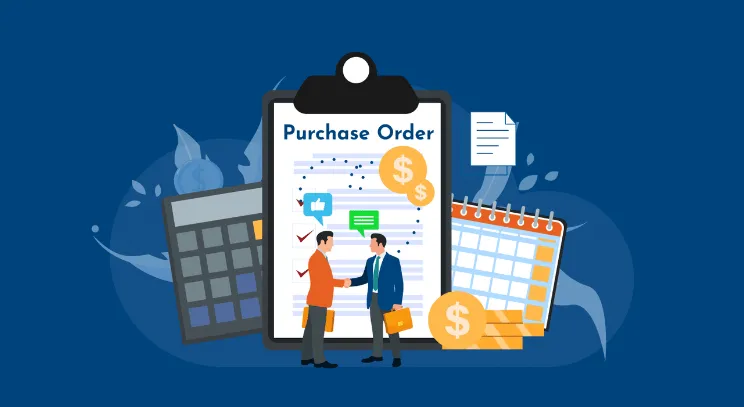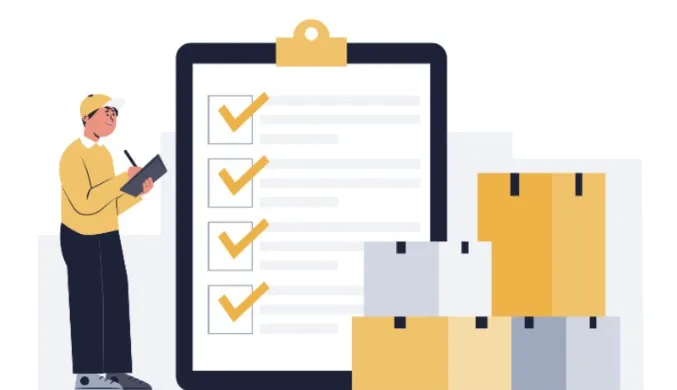What are the four types of procurement? Guidelines and industry cases

When your company needs to buy raw materials, software subscriptions, cleaning services, and a new office building, do you use the same procurement approach for all of them? If you answered no, you're already recognizing that different purchases require different strategies—whether you realize it or not.
Understanding the four types of procurement isn't just academic theory. It's the foundation for optimizing your spending, managing risk, and driving real strategic value. Let's break down what each type really means and how to apply them in your organization.

Most procurement discussions get this wrong by oversimplifying. Here's what you actually need to know:
Direct Procurement: The Money-Making Stuff
This is what goes into your final product or service. If you're a manufacturer, it's your raw materials. If you're a restaurant, it's your food ingredients. If you're a software company, it's your cloud infrastructure that directly supports your product.
Here's the deal: direct procurement directly impacts your revenue. When these supplies stop, your production stops. That's why it demands strategic relationships with suppliers, not just transactional purchasing.
Indirect Procurement: The "Keep the Lights On" Spending
This is everything that keeps your business running but doesn't end up in your final product. Think office supplies, utilities, maintenance equipment, and software subscriptions like Slack or Microsoft Office.
The challenge? This spending is often fragmented across departments and lacks visibility. But here's the opportunity: strategic management of indirect procurement can deliver quick wins and significant cost savings.
Services Procurement: The Expertise You Don't Have In-House
This covers everything from consulting and marketing agencies to temporary staff and specialized contractors. The big difference? You're buying knowledge and outcomes, not physical products.
The key with services procurement is that you're managing deliverables and relationships, not inventory. This requires different contracts, different evaluation methods, and different relationship management approaches.
Capital Expenditure (CapEx) Procurement: The Big Investments
This is your long-term asset purchasing—building a new facility, buying major equipment, or enterprise software systems. These decisions have multi-year financial implications and usually require executive approval.
What makes CapEx different? The evaluation process is longer, the stakes are higher, and you're making decisions that will impact your business for years to come.
The theory is nice, but how does this actually work in different industries? Let me show you.

In Manufacturing:
Direct: Steel, plastic resins, electronic components
Indirect: Safety equipment, machine lubricants, factory maintenance supplies
Services: Equipment repair, logistics and transportation, temporary labor
CapEx: Industrial robots, production line machinery, warehouse expansion
In Technology:
Direct: Cloud computing resources, data center hardware for customer-facing products
Indirect: Office furniture, productivity software, team lunches
Services: Software development contractors, cybersecurity audits, digital marketing agencies
CapEx: Corporate headquarters, data center construction, major software platform licenses
In Healthcare:
Direct: Pharmaceuticals, surgical instruments, medical implants
Indirect: Administrative supplies, cleaning services, patient linens
Services: Medical equipment maintenance, temporary nursing staff, IT support
CapEx: MRI machines, hospital wing construction, electronic health record systems
The pattern here is crucial: your industry determines which procurement type deserves the most attention and resources.

If you're in a smaller organization, the four-type model might feel overwhelming. Here's how to adapt it:
The 80/20 Rule for Procurement:
Focus 80% of your effort on the 20% of spending that could really hurt your business if mismanaged.
Three Simplified Categories:
Money-Making Materials (Your version of Direct Procurement)
Anything that directly affects your ability to deliver to customers
Manage with strategic supplier relationships and backup plans
Business Essentials (Combining Indirect & Services)
Everything needed to run your operations
Focus on consolidation and efficiency
Game-Changing Investments (Your CapEx)
Major purchases that will grow or transform your business
Require thorough ROI analysis and executive input
I've seen small companies save 15-20% on their overall spending just by implementing this simple categorization system.
Today, every procurement decision carries environmental and social implications. Here's how to build sustainability into each procurement type:
For Direct Procurement:
Ask your suppliers: "What's your carbon footprint for producing these materials?" and "Can you provide transparency into your supply chain labor practices?"
For Indirect Procurement:
Choose suppliers who offer sustainable alternatives—like recycled office supplies or energy-efficient equipment. Small changes here add up quickly.
For Services Procurement:
Evaluate potential partners on their diversity policies, fair wage practices, and environmental commitments. Their values become an extension of your brand.
For Capital Expenditure:
Make energy efficiency and environmental impact key criteria in your evaluation. That new manufacturing equipment should be assessed for both cost and carbon output.
The best part? Sustainable procurement often aligns with cost-saving. Energy-efficient equipment costs less to operate. Ethical suppliers typically have better retention and quality.
Knowing the categories is one thing—implementing them is another. Here's your roadmap:

Step 1: Conduct a Spend Analysis
Pull data from your accounting system for the past 12 months. Categorize every significant purchase. You'll likely discover spending patterns you never noticed.
Step 2: Map to the Four Types
Assign each spending category to one of the four procurement types. This alone will reveal where your attention needs to be focused.
Step 3: Develop Category Strategies
Direct: Focus on supplier relationships and risk management
Indirect: Drive efficiency and consolidation
Services: Emphasize clear deliverables and performance metrics
CapEx: Implement rigorous evaluation and ROI analysis
Step 4: Implement and Refine
Start with your highest-spend categories first. Train your team, establish new processes, and set up regular review cycles.
You can't improve what you don't measure. Here are the key metrics for each procurement type:
Direct Procurement KPIs:
Supplier defect rates
On-time delivery performance
Total cost of ownership (not just purchase price)
Indirect Procurement KPIs:
Process efficiency (purchase order cycle time)
Compliance with preferred suppliers
Cost savings versus previous periods
Services Procurement KPIs:
Service level agreement (SLA) compliance
Internal stakeholder satisfaction
Budget adherence
Capital Expenditure KPIs:
Project completion on time and budget
Return on investment versus projections
Asset utilization rates
This might feel like a lot to implement, which is why we've created tools to make it practical.
[Download Your Free Procurement Classification Toolkit]
You'll get:
Spend Analysis Template (Excel) - To categorize your current spending
Supplier Evaluation Scorecard - For comparing vendors objectively
Procurement Health Check Assessment - To identify your biggest opportunities
Implementation Checklist - So you don't miss any crucial steps
These are the exact same tools we use with our clients to help them build world-class procurement operations.
Start with one area. Pick your highest-spend category and apply the appropriate strategy. The insights you gain will likely pay for the effort in the first few months.
Remember, the goal isn't perfection—it's progress. Each step you take toward more strategic procurement management will deliver compounding returns.
Ready to transform your procurement approach? Download your free toolkit above, or if you'd like personalized guidance, [schedule a complimentary consultation with our procurement experts]. We'll help you apply these frameworks to your specific business context.
1. Q: How do we handle purchases that seem to fit into more than one category?
A: This is common. The key is to identify the primary business purpose. For example, buying laptops for your new software developers is a Direct procurement if they're building your product, but Indirect if they're for the HR team. Create a simple rule: "Which P&L line item does this cost support?" This usually clarifies the category.
2. Q: Our company is growing quickly. At what point should we formally separate the management of these different procurement types?
A: A good rule of thumb is when your annual spend reaches a point where a 10% saving in any one category would justify a dedicated part-time role. For most businesses, this is around the $5-10M annual spend mark. Before that, use the simplified three-category model, but assign an "owner" for each within your existing team.
3. Q: How do we get other departments (like Marketing or R&D) to follow these procurement categories?
A: Don't lead with the procurement framework. Instead, partner with them to solve their problems. For Marketing, frame Services Procurement as a way to get better results from their agencies. For R&D, frame Direct Procurement as a way to ensure they never run out of critical materials. When they see the value for their goals, adoption follows.
4. Q: We're a non-profit. Do these same categories apply to us?
A: Absolutely, but the focus shifts. Your "Direct" procurement might be program-related materials. "CapEx" could be a new building for community services. The framework is universal, but your strategy for each type will be driven by your mission and donor requirements, not profit margins.
5. Q: What's the biggest risk of getting these categories wrong?
A: Misallocation of resources and talent. The most common mistake is treating high-risk Direct Procurement like simple, transactional Indirect Procurement. This can lead to supply chain disruptions that halt your operations. Conversely, over-engineering the process for low-value Indirect purchases creates unnecessary bureaucracy and slows down your team.
6. Q: How should our negotiation strategy differ across these categories?
A: Your approach should vary significantly:
Direct: Negotiate for long-term partnerships and shared risk.
Indirect: Negotiate for volume discounts and efficiency.
Services: Negotiate for clear deliverables, KPIs, and flexibility.
CapEx: Negotiate for lifecycle support, warranties, and future-proofing.
7. Q: Can a single supplier fall into multiple procurement categories?
A: Yes, and this is a sign of a strong strategic partner. For example, a technology provider might be a Direct supplier for cloud infrastructure, a Services provider for implementation, and a CapEx vendor for a major software license. In these cases, manage the relationship holistically but negotiate each type of spend with its appropriate strategy.
8. Q: How do global operations impact this categorization model?
A: The categories remain the same, but your execution will differ by region. Local regulations, cultural norms, and market maturity will affect how you manage each type. A one-size-fits-all global strategy often fails. The framework gives you a consistent way to analyze and adapt your approach for each region.
9. Q: What role should technology play in managing these different types?
A: Your tech stack should support the unique workflow of each category. Don't force one tool to do everything. You might use:
A sophisticated S2P platform for Direct and CapEx.
A simplified, user-friendly P-cards system for Indirect.
A specialized contract and SOW management tool for Services.
10. Q: How do we measure the overall success of implementing this categorized approach?
A: Beyond the category-specific KPIs, track the meta-metrics:
Cycle Time: Are we making decisions faster in each category?
Stakeholder Satisfaction: Are internal clients happier with the support they're getting?
Cost Avoidance: Are we preventing bad purchases, not just getting lower prices?
Risk Reduction: Have we had fewer supply disruptions or compliance issues?
Contact us
Call Us: +86 193 7668 8822
Email:[email protected]
Add: Building B, No.2, He Er Er Road, Dawangshan Community, Shajing Street, Bao'an District, Shenzhen, China